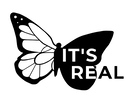Editor's Statement
This editor’s statement was a beast to write.
I kept trying to produce something about women’s history month and queerness and racial identity, but (as mentioned in my Midweek Musing), juggling those lofty mantles was exhausting. So I’ll cut straight to the point.
Once again, the creativity and depth of the works featured in this issue awed our team. Our contributors took the monthly theme of “intersect” to new heights and interpretations; our staff savored each and every one of these works.
And now (with a very smooth transition), I’d like to address some thoughts from Virginia Woolf. She argues that incandescence - or transparency/a removal of artist from art - is what makes art great. According to her, an artist’s persona and emotions suffocate and stunt their creativity. Woolf cites Shakespeare as a prime example of this phenomena: because we know so little about him, his plays resonate so powerfully with us.
And while I respect Woolf, this month has greatly strengthened my disagreement with her claim. Some of the most moving works I’ve seen spring directly from emotion. Some of the poems I’m most proud of were conceived in insomaniac bouts of fear or anger or sadness; it is from pain and uncertainty that my writing adopts a fearless abandon, a feverish insistence.
Imagine a city: a grid. Woolf’s argument places the best (most incandescent) art along a single street: the audience. But only in the knots of the city, where the avenues and streets and cul de sacs and public structures intertwine, does art transcend into tangibility. Woolf’s version of incandescence is beautiful, yes. But ironically, incandescence has another meaning: impassionate, inflamed, emotional. This incandescence is the one found in the guttural cry of a lamenting poem, the burning in a song of self-hatred, the feral red anger in a painting of a suicide.
In Woolf’s version of incandescence, we see something of humanity - something as grand and lofty as the themes I gave up trying to weave into this statement. We then apply this grandness to ourselves. But in this other version of incandescence, we skip the intermediary of humanity. In this version of incandescence, artist and audience touch.
The art in this issue stands at said intersection between artist and audience. I could not be prouder or more grateful for It’s Real’s growth - as usual, a huge thank-you goes to our staff, contributors, and readers.
Happy reading!
-Ana Chen, Founder and Editor-in-Chief
I kept trying to produce something about women’s history month and queerness and racial identity, but (as mentioned in my Midweek Musing), juggling those lofty mantles was exhausting. So I’ll cut straight to the point.
Once again, the creativity and depth of the works featured in this issue awed our team. Our contributors took the monthly theme of “intersect” to new heights and interpretations; our staff savored each and every one of these works.
And now (with a very smooth transition), I’d like to address some thoughts from Virginia Woolf. She argues that incandescence - or transparency/a removal of artist from art - is what makes art great. According to her, an artist’s persona and emotions suffocate and stunt their creativity. Woolf cites Shakespeare as a prime example of this phenomena: because we know so little about him, his plays resonate so powerfully with us.
And while I respect Woolf, this month has greatly strengthened my disagreement with her claim. Some of the most moving works I’ve seen spring directly from emotion. Some of the poems I’m most proud of were conceived in insomaniac bouts of fear or anger or sadness; it is from pain and uncertainty that my writing adopts a fearless abandon, a feverish insistence.
Imagine a city: a grid. Woolf’s argument places the best (most incandescent) art along a single street: the audience. But only in the knots of the city, where the avenues and streets and cul de sacs and public structures intertwine, does art transcend into tangibility. Woolf’s version of incandescence is beautiful, yes. But ironically, incandescence has another meaning: impassionate, inflamed, emotional. This incandescence is the one found in the guttural cry of a lamenting poem, the burning in a song of self-hatred, the feral red anger in a painting of a suicide.
In Woolf’s version of incandescence, we see something of humanity - something as grand and lofty as the themes I gave up trying to weave into this statement. We then apply this grandness to ourselves. But in this other version of incandescence, we skip the intermediary of humanity. In this version of incandescence, artist and audience touch.
The art in this issue stands at said intersection between artist and audience. I could not be prouder or more grateful for It’s Real’s growth - as usual, a huge thank-you goes to our staff, contributors, and readers.
Happy reading!
-Ana Chen, Founder and Editor-in-Chief
